Johann of Laz, or Johannes von Laaz, Joannes de Lasnioro, was a Bohemian alchemist during the first half of the fifteenth century.
Little is known about Johann's life, but his name probably indicates that he came from Ledce u Židlochovic (German Laatz).
His Tractatus aureus de lapide philosophorum (The Golden Treatise on the Philosopher's Stone) was first printed in 1611 and was later reprinted in Zetzner's Theatrum Chemicum . In that text, he presents a transmutation of metals from quicksilver, sulfur, and gold. Laz also claims to be a student of the alchemist Anthony of Florence (Antonius de Florentia), who was supposed to have been murdered in Bohemia.
Benedikt Nikolaus Petraeus cites Johann of Laz in the foreword to his edition of Basil Valentine's Chymischen Schriften (1667). In that text, he discusses the supposed alchemical activity of Barbara von Cilli, widow of the Holy Roman Emperor Sigismund of Luxembourg. According to Laz, she exchanged ideas about the transmutation of metals with many merchants.

Alchemy is an ancient branch of natural philosophy, a philosophical and protoscientific tradition that was historically practiced in China, India, the Muslim world, and Europe. In its Western form, alchemy is first attested in a number of pseudepigraphical texts written in Greco-Roman Egypt during the first few centuries CE.
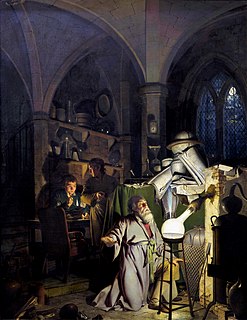
The philosopher's stone, more properly philosophers' stone or stone of the philosophers, is a mythical alchemical substance capable of turning base metals such as mercury into gold or silver. It is also called the elixir of life, useful for rejuvenation and for achieving immortality; for many centuries, it was the most sought goal in alchemy. The philosophers' stone was the central symbol of the mystical terminology of alchemy, symbolizing perfection at its finest, enlightenment, and heavenly bliss. Efforts to discover the philosopher's stone were known as the Magnum Opus.

Andreas Libavius or Andrew Libavius was born in Halle, Germany c. 1550 and died in July 1616. Libavius was a renaissance man who spent time as a professor at the University of Jena teaching history and poetry. After which he became a physician at the Gymnasium in Rothenburg and later founded the Gymnasium at Coburg. Libavius was most known for practicing alchemy and writing a book called Alchemia, one of the first chemistry textbooks ever written.
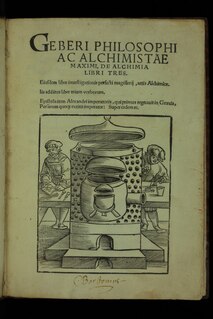
Pseudo-Geber refers to a corpus of Latin alchemical writing dated to the late 13th and early 14th centuries, attributed to Geber (Jābir ibn Hayyān), an early alchemist of the Islamic Golden Age. The most important work of the corpus is Summa perfectionis magisterii, likely written slightly before 1310, whose actual author has sometimes been identified as Paul of Taranto. The work was influential in the domain of alchemy and metallurgy in late medieval Europe.

Michael Sendivogius was a Polish alchemist, philosopher, and medical doctor. A pioneer of chemistry, he developed ways of purification and creation of various acids, metals and other chemical compounds. He discovered that air is not a single substance and contains a life-giving substance—later called oxygen—170 years before Scheele's discovery of the element. He correctly identified this 'food of life' with the gas given off by heating nitre (saltpetre). This substance, the 'central nitre', had a central position in Sendivogius' schema of the universe.
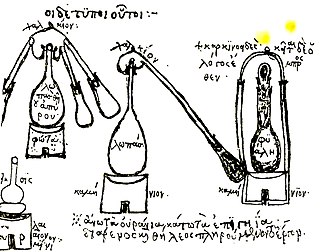
Zosimos of Panopolis was a Greco-Egyptian alchemist and Gnostic mystic who lived at the end of the 3rd and beginning of the 4th century AD. He was born in Panopolis, and flourished ca. 300. He wrote the oldest known books on alchemy, which he called "Cheirokmeta," using the Greek word for "things made by hand." Pieces of this work survive in the original Greek language and in translations into Syriac or Arabic. He is one of about 40 authors represented in a compendium of alchemical writings that was probably put together in Constantinople in the 7th or 8th century AD, copies of which exist in manuscripts in Venice and Paris. Stephen of Alexandria is another.

Johann Kunckel, awarded Swedish nobility in 1693 under the Swedish name von Löwenstern-Kunckel and the German version of the name Kunckel von Löwenstern, German chemist, was born in 1630, near Rendsburg, his father being alchemist to the court of Holstein. He became chemist and apothecary to the dukes of Lauenburg, and then to the Elector of Saxony, Johann Georg II, who put him in charge of the royal laboratory at Dresden. Intrigues engineered against him caused him to resign this position in 1677, and for a time he lectured on chemistry at Annaberg and Wittenberg. Invited to Berlin by Frederick William, in 1679 he became director of the laboratory and glass works of Brandenburg. In 1688 the king of Sweden, Charles XI, brought him to Stockholm, ennobling him under the name von Löwenstern-Kunckel in 1693 and making him a member of the Bergskollegium, the Board of Mines. He died probably on 20 March 1703 near Stockholm.

Projection was the ultimate goal of Western alchemy. Once the Philosopher's stone or powder of projection had been created, the process of projection would be used to transmute a lesser substance into a higher form; often lead into gold.
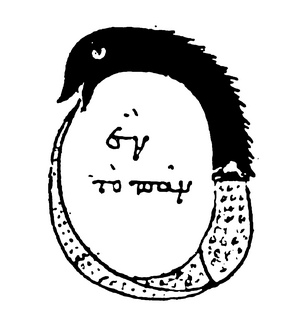
In alchemy, the term chrysopoeia refers to the artificial production of gold, most commonly by the alleged transmutation of base metals such as lead. A related term is argyropoeia, referring to the artificial production of silver, often by transmuting copper. Although alchemists pursued many different goals, the making of gold and silver remained one of the defining ambitions of alchemy throughout its history, from Zosimus of Panopolis to Robert Boyle (1627–1691).
The word chemistry derives from the word alchemy, which is found in various forms in European languages. Alchemy derives from the Arabic word kimiya (كيمياء) or al-kīmiyāʾ (الكيمياء). The Arabic term is derived from the Ancient Greek χημία, khēmia, or χημεία, khēmeia, 'art of alloying metals', from χύμα, from χέω. However, the ultimate origin of the word is uncertain. According to the Oxford English Dictionary, al-kīmiyāʾ may be derived from the greek "χημία", which is derived from the ancient Egyptian name of Egypt, khem or khm, khame, or khmi, meaning "blackness", i.e., the rich dark soil of the Nile river valley. Therefore, alchemy can be seen as the "Egyptian art" or the "black art". However, it is also possible that al-kīmiyāʾ derived from χημεία, meaning "cast together".
John Dastin (c.1293-c.1386) was an English alchemist of the fourteenth century. Little is known of his life beyond the texts which are attributed to him. Dastin is known for correspondence with Pope John XXII and Cardinal Napoleone Orsini in defense of alchemical practice, dated to 1320.

Johann Friedrich Schweitzer or Sweitzer, usually known as Helvetius was a Dutch physician and alchemical writer of German extraction. He is known for his books Vitulus Aureus, published in 1667, Ichts aus Nichts, für alle Begierigen der Natur from 1655 and Miraculo transmutandi Metallica, Antwerp, 1667.
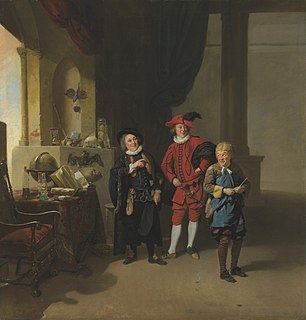
Alchemy has had a long-standing relationship with art, seen both in alchemical texts and in mainstream entertainment. Literary alchemy appears throughout the history of English literature from Shakespeare to modern Fantasy authors. Here, characters or plot structure follow an alchemical magnum opus. In the fourteenth century, Chaucer began a trend of alchemical satire that can still be seen in recent fantasy works like those of Terry Pratchett.

Ali Puli, also known as Alipili, is the attributed author of a number of 17th-century alchemical and hermetic texts. However, his historical existence is doubtful, and A.E. Waite went as far as to describe the work attributed to him as "forgery pure and simple in respect of age and authorship [which] may be left to stand at its value in the matter of content."
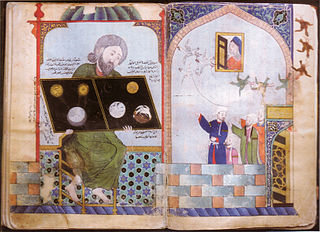
Alchemy and chemistry in Islam refers to the study of both traditional alchemy and early practical chemistry by Muslim scholars in the medieval Islamic world. The word alchemy was derived from the Arabic word كيمياء or kīmiyāʾ and may ultimately derive from the ancient Egyptian word kemi, meaning black.
Johannes Nicolaus Furichius (1602–1633) was a Franco-German neo-Latin Imperial poet laureate, pharmacist, doctor of medicine and alchemist from Strasbourg.
The Deutsche Theatrum Chemicum is a collection of alchemical texts, predominantly in German translation, which was published in Nuremberg in three volumes by Friedrich Roth-Scholtz (1687–1736), the publisher, printer and bibliographer.
Alexander von Suchten was an alchemist, doctor and writer.
Solomon or Salomon Trismosin was a legendary Renaissance alchemist, claimed possessor of the philosopher's stone and teacher of Paracelsus. He is best known as the author of the alchemical works Splendor Solis and Aureum Vellus.












